This was published 7 years ago
Kolkata, India tour: Noise, passion, colour and heartbreak where the Lion movie was set
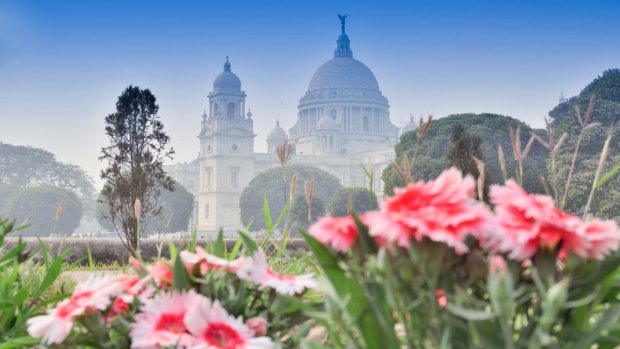
The Victoria Memorial in Kolkata. Credit: iStock
The Oberoi Grand is Kolkata's finest hotel, a colonial relic still pungent with memories of the pukka days of the British Empire, but when I step out the front door on to Chowringhee Road I am set loose in a city in the vice of a hangover. It's the day after Holi, the Festival of Colours, when the Indian subcontinent unleashes its delinquent instincts and smears coloured powder over everything and everyone. The city streets are splotched with pink, purple and yellow and quite a few of its citizens sport rose-coloured necks and lilac hair. Even dogs and cats are not immune and there are some psychedelic creatures wandering the streets.
We're about to visit Kolkata, safely, from a seat in an airconditioned movie theatre. Released in Australia in January, Lion tells the true story of five-year-old Saroo, an Indian boy who gets lost, ends up on a train and finds himself enduring the tough life of a street urchin in Kolkata. Finally, he is adopted by a couple in Tasmania, played in the film by Nicole Kidman and David Wenham. Years later he decides to retrace his roots and find his biological family in the small village he left many years before, a needle-in-haystack story if ever there was.
Kolkata, as it often does, plays the role of a Dickensian hell in Lion, a symbol for the depths of human misery. End up as a kid on the streets of Kolkata and lady luck has not just cut you loose, she has sold you to the devil. For filmmakers in search of a living nightmare – City of Joy, In the Flesh - Kolkata supplies fangs and venom. For as long as anyone can remember, this has been the poster child for wretchedness.
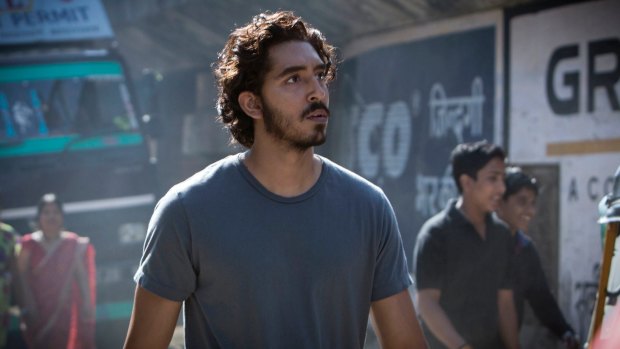
Dev Patel in a Kolkata scene from Lion.Credit: Mark Rogers
On a superficial level Kolkata delivers the goods. It's spectacularly unkempt. The heart of the city is splendidly endowed with colonial buildings from when this was the capital of British India, many of them under assault from mother nature. Black fungus furs the Doric columns of the old Silver Mint, ficus trees sprout from cracks and crevices in the buildings in BBD Bagh, formerly Dalhousie Square, once the centre of power for the British East India Company. Kolkata clings to things – battered, antiquated trams, broken, smoke-belching buses, black and yellow Ambassador taxis which have disappeared from most of India's cities. This is one of the last cities where you might ride in a rickshaw, pulled by a human scarecrow wearing rags. The city's telegraph office was India's last, closed in 2013. The final telegraph, sent to a recipient 15 kilometres away, took nine days to arrive. India's first telegram was sent from the same office, when it was delivered to Diamond Harbour 40 kilometres away in 2½ hours. That was in 1850.
In my 20-minute stroll from the Oberoi Grand along Chowringhee Road, I come across a skeleton of a man naked and swaying on his stick, a suspect being arrested by two brown-shirted police, a demonstration, various touts, beggars, lime juice squeezers, paan merchants and sleeve-tugging children who call the streets of Kolkata home and business. On my first visit decades earlier I was propelled along this same street by a tsunami of rushing, shoving, panicked pedestrians, scattering before a locked and careering pair of amorous cattle.
Look beyond the grime and decay, rot and riot and you discover a fascinating, intoxicating and intensely human city. Adda, for example, is a Kolkata specialty. It means noisy and passionate debate and it's woven into the warp and weft of the city. Early in the morning I come down to the lobby of my hotel and a tremendous ruckus. Three men, raised voices, excitement, much consternation and it's only 6.45am. Surely a fight is brewing, but after a minute it dawns on me that this is a normal friendly exchange of views in excitable Kolkata. Adda is practised with enthusiasm at the College Street Coffee House, a hangout for students from Presidency College across the road. It's perennially packed, always noisy and I can smell discontent, literally. Next to my table, four young women are smoking, in defiance of a sign on the table that says not to, each one smouldering rebellion, or perhaps that's just adda. The surroundings streets are where the city's students come for their books, lined with rickety stalls where sleepy men preside over tottering stacks of books on objective chemistry and advanced dynamics.
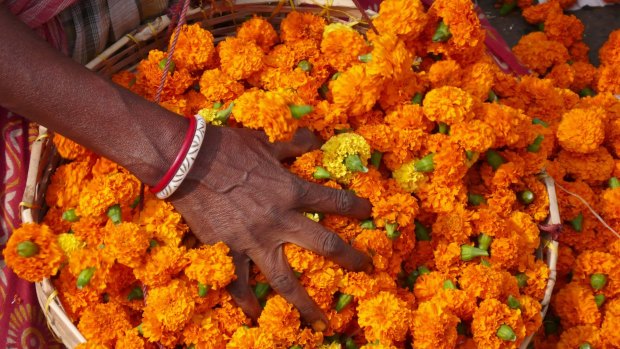
Flowers for sale in the Mullik Ghat flower market in Kolkata. Credit: iStock
Kolkata is like that, a city of villages, each dedicated to a specific trade. There is a village or, at the very least, a street if you're a Muslim man looking for a fancy kurta in which to get married, or a part for your car and don't want to pay the price for new. A street if you're in the market for a new pair of specs, a lighting fixture or a half life-size Kali wearing a necklace of skulls and stepping on her consort Shiva, all made from clay. This is Kumortuli, the potters' village, one of the most intriguing of all the city's neighbourhoods. It stands on the banks of the Hooghly River which provides it with the clay used for the statues of gods and goddesses of the Hindu pantheon that are Kumortuli's bread and butter. A rough armature is constructed from straw which is packed and bound together tightly, covered with grey clay, smoothed, dried and finally painted. Since the statues are cheap as chips and biodegradable, they're a festival favourite, to be prettily decorated and hung with lights and flowers and adored then submerged in the waters of the Hooghly, a branch of the sacred Ganges. Prefer something classical? How about a scowling, life-size lion, painted to your specs, or a Greek Diana for your portico?
Kolkata was conjured up from three Hooghly River villages to serve the mercantile requirements of the British East India Company. Throughout the 18th and 19th centuries its staple trade was opium, grown by Bengali farmers and smuggled into China to pay for tea, a Chinese monopoly at that time. It was a lucrative business and the British who came to Kolkata under the auspices of the East India Company fell under the spell of the sensual and sophisticated culture they found here. Many adopted the dress and manners of the Mughal aristocracy, smoked a hookah, chewed paan and set themselves up in opulent palaces. One in three married Indian women, many more took them as concubines. In the south wall of St John's Church is the memorial to Lieutenant Colonel James Achilles Kirkpatrick of the East India Company, who fell in love with a Hyderabadi noblewoman and converted to Islam, which caused a scandal in Calcutta and provided William Dalrymple with the inspiration for his novel, White Mughals.
In the untidy grounds of the church stands a monument to the famous Black Hole of Calcutta, the tiny cell where British and Anglo-Indian soldiers and Indian civilians were imprisoned after the siege of Kolkata's Fort William in 1756, in conditions so cramped that most died in a single night. The British most probably amplified the death rate and it worked. For imperialists in need of an excuse to plunder, "Black Hole" became conveniently yoked to the name "Calcutta". The following year a punitive expedition set forth, and the rich princely state of Bengal fell under the control of the British East India Company, the seed for British rule over all of India.
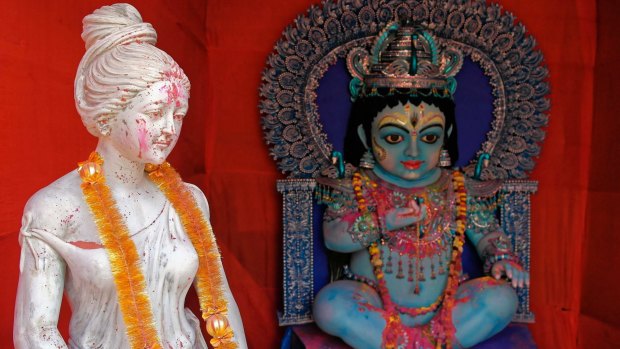
Shiva, as a blue child, and a Grecian-style statue showing the after-effects of Holi, in Kumortuli, the potters' village.Credit: Michael Gebicki
Just as India infected the British, so too Britain left its imperial mark on Kolkata. The city's architectural showpiece is the Victoria Memorial, name unchanged since this showy, domed wedding cake in white marble was created amid green lawns a century ago. The statue of the Empress Victoria in front of the building, like a sceptered pudding, remains intact, and the local pi-dogs are grateful for the shade it casts over the marble staircase at its base. A powerful whiff of the British Raj lingers on at the Tollygunge Club, a sports club with a golf course, swimming pools and tennis courts, where the gardens are filled with hollyhocks and signs restrict the movement of caddies, ayahs, drivers and various other attendants required by even the modestly wealthy.
British rule brought with it traders from the Middle East, who settled in a compact area along the Hooghly where vestiges of their existence linger, and in some cases thrive. Among them were Jewish traders from Baghdad, and the Magen David Synagogue, with its wrought iron and crystal chandeliers, is a beautiful memory of this once flourishing community. In a reversal of the Jewish diaspora most have gone to Israel and no rabbi remains to minister to the handful of Jews who still call Kolkata home. These days a Muslim caretaker looks after the Magen David Synagogue.
Another group who installed themselves under the British was the Parsees, fire worshippers originally from Persia who follow the teachings of Zoroaster. Their fire temple is in Metcalf Street, but only believers are allowed into the inner sanctum where the sacred eternal fire burns on an altar.
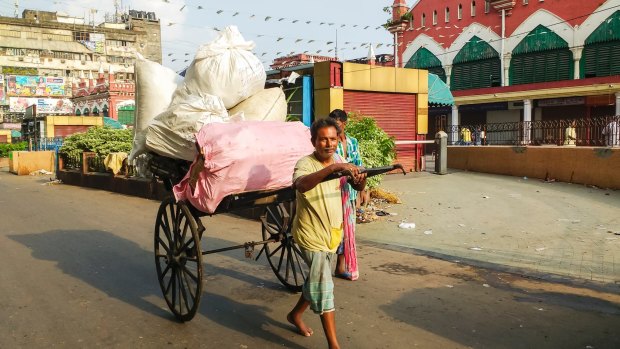
A Kolkata rickshaw puller hauling goods. Credit: iStock
One of the most spectacular of Kolkata's temples, by far the most entertaining and open to all, is Sheetalnath Jain temple, also known as the Beauty of Bengal, according to my guide. Built in the mid-1800s by Rai Budree Das Bahadur, jeweller to the vice-roy, the word "flamboyant" doesn't come close to describing this gaudy confection of mirrored columns, coloured glasswork and fountains that gush in synchronised splendour. Columns in alternating lilac and mustard surround the temple on the north side of the complex, capped with a decorative parapet in pink, lime and yellow depicting cavorting fish and overflowing fruit bowls. It's the kind of temple that Lady Gaga might design if she were that way inclined. There are two major schools of Jains and the easiest way to think of them is naked and non-naked. Sheetalnath Temple belongs to the non-naked school, although you could probably disrobe and nobody would even notice.
Kolkata is also the city of Mother Theresa, and never was a city more in need of saints. Born in 1910 in Skopje, in what is now Macedonia, she arrived in India in 1929 and established her mission in Kolkata in 1948. Two years later she founded the Missionaries of Charity in the city to care for "the hungry, the naked, the homeless, the crippled, the blind, the lepers, all those people who feel unwanted, unloved, uncared for throughout society". The work goes on and her tomb in the Mother House of the Missionaries of Charity has become a place of pilgrimage. Noble as her cause may be, her methods are controversial, perhaps conflating suffering with sanctity. Mother Theresa was imperfect certainly, politically incorrect and in league with the devil when it suited her aims, but I suspect that young Saroo, the subject of Lion, didn't stop to ask for the credentials of his saviour when he was rescued from the mean streets of Kolkata.
HOW TO HELP
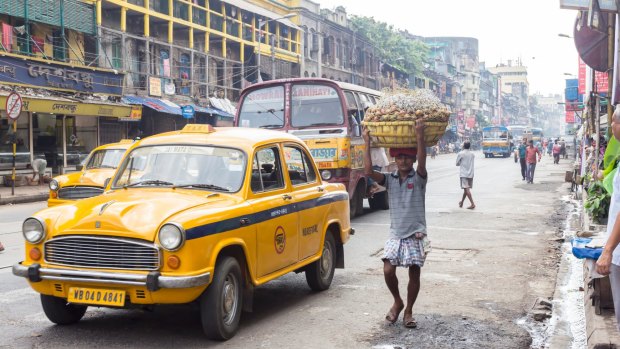
The ubiquitous yellow taxi in a Kolkata street.Credit: iStock
Of all the sights that Kolkata presents, there is probably none more heart-rending than the plight of street children, the homeless and destitute. If you want to make a difference, there are orphanages and homes that accept volunteers, but the reputable ones are looking for volunteers with specialist skills and several months to devote to the cause. Donations are a simple, practical way to help, and even a little cash goes a long way. The list of worthy causes includes Shishur Shevay, a home for orphan girls, shishursevay.com/about/, Future Hope, see futurehope.net and Responsible Charity, responsiblecharity.org/
TOURS
POLLINATE ENERGY
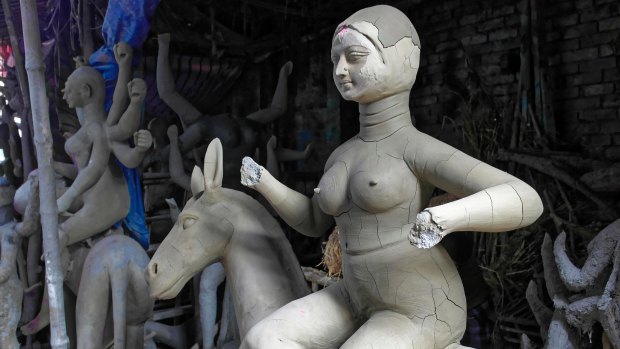
Statues in Kumortuli, the potters' village.Credit: Michael Gebicki
is a social enterprise that helps light up lives in the slums of Kolkata, improving health outcomes and air pollution from kerosene and wood stoves and bringing solar light to Kolkata's tent slums. Their half-day tours explore their work, venturing into the needy communities where they deliver services. See urbanadventures.com
CALCUTTA WALKS
specialises in two-footed tours of the city. Themes include history, architecture and food tours. Bicycle tours and the back seat of a venerable Royal Enfield motorcycle are other options. calcuttawalks.com
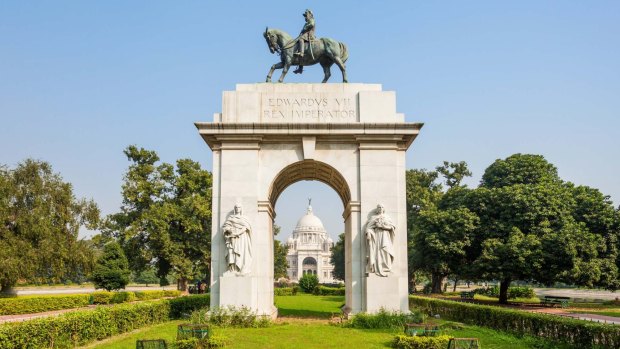
The entrance gate at Victoria Memorial.Credit: iStock
CALCUTTA PHOTO TOURS
operated by Manjit Singh, take visitors into some of the city's lesser known markets, temples and neighbourhoods, with amazing photo ops along the way. See calcuttaphototours.com
KOLKATA STORY TOURS
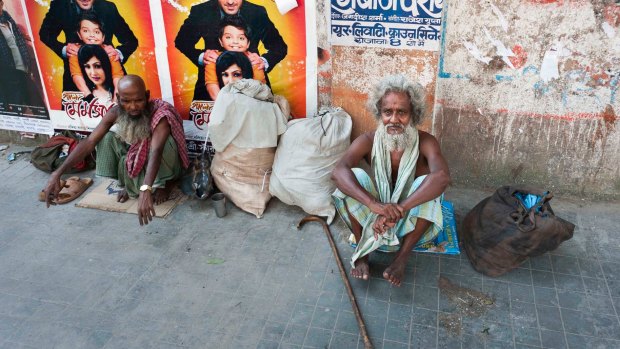
Two homeless men beg for alms in the Chowringhee suburb of Kolkata.Credit: iStock
are walking tours led by an advertising executive whose intimate knowledge of Kolkata's history, politics, economy and culture, as well as local gossip, brings flesh and blood to his cultural, historic and culinary tours.
TRIP NOTES
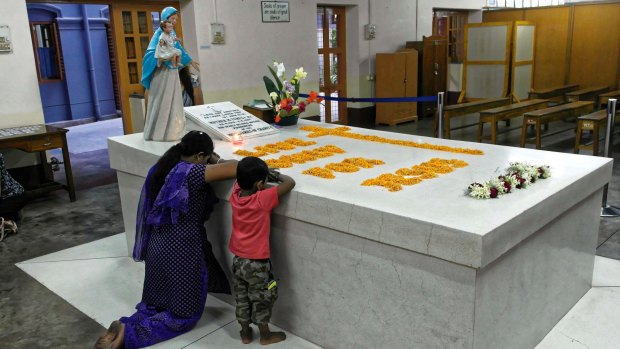
The Tomb of Mother Theresa in the Mother House, Missionaries of Charity.Credit: Michael Gebicki
FLY
Singapore Airlines operates daily flights to Kolkata from Singapore, with connections from major Australian cities.
STAY
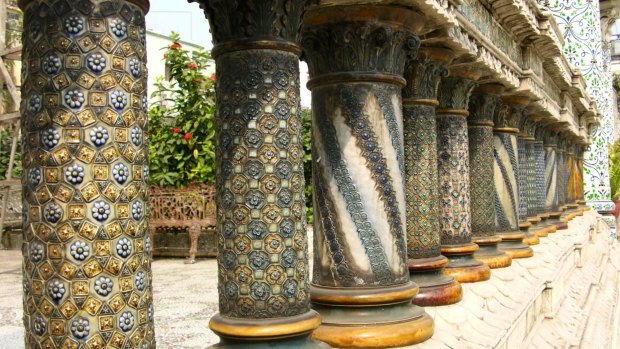
Columns form a partition on the grounds of the Mirrored Temple.Credit: iStock
The Oberoi Grand Kolkata is the city's premier hotel, evoking the style and comfort of Asia's finest colonial-era hotels and scrupulously run by India's most prestigious group of hotels.
Central Bed and Breakfast has clean, spacious and comfortable serviced apartments in a prime location at a modest price.
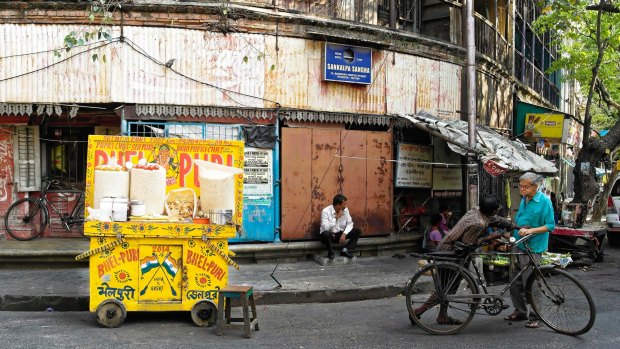
The back streets of Kolkata.Credit: Michael Gebicki
MORE
Banyan Tours, banyantours.com
Michael Gebicki was a guest of Banyan Tours and Travel and travelled courtesy of Singapore Airlines.
Sign up for the Traveller Deals newsletter
Get exclusive travel deals delivered straight to your inbox. Sign up now.